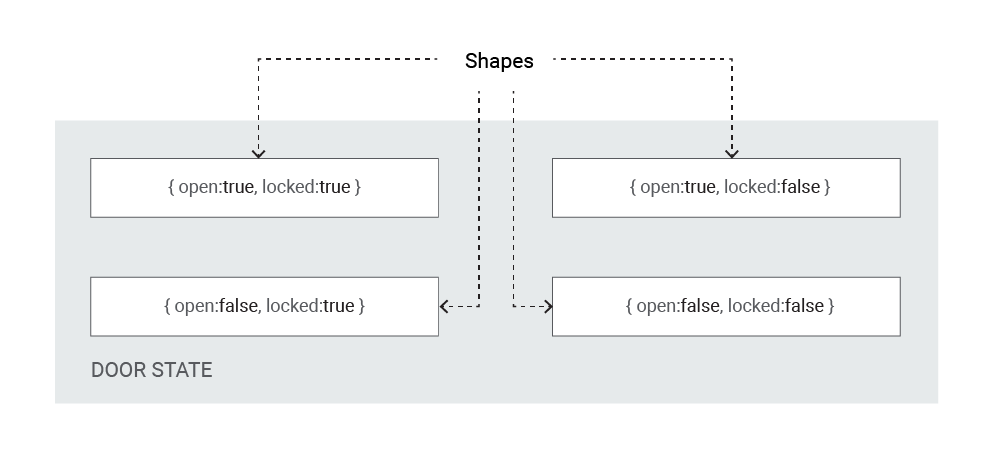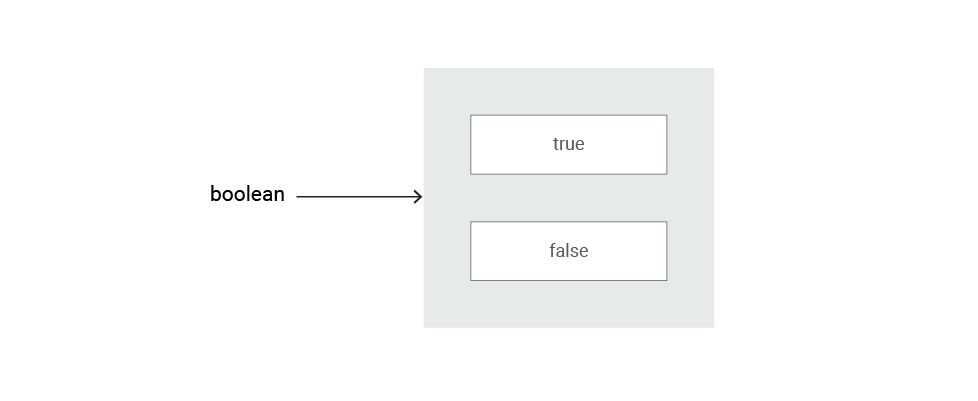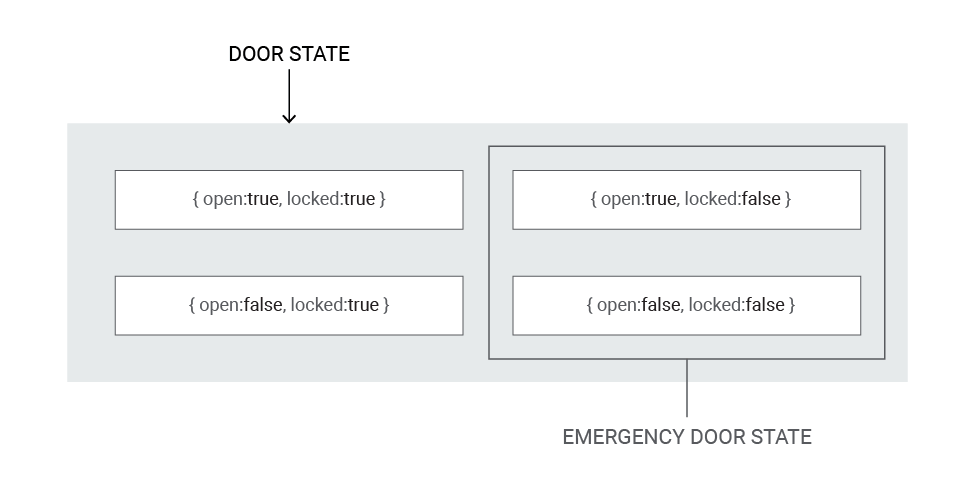- Write a RESTful API with Ballerina
- Write a gRPC service with Ballerina
- Write a GraphQL API with Ballerina
- Work with data using queries in Ballerina
- Build a data service in Ballerina
- Build a Change Data Capture (CDC) service in Ballerina
- Work with Large Language Models (LLMs) using natural expressions
- Deploy Ballerina on Kubernetes
- Manage data persistence with bal persist
- Create your first connector with Ballerina
See how the Ballerina programming language's flexible type system helps developers work with networked resources in their code.
In a programming language, the type system is the foundation for representing data and implementing logic. It provides the means of creating abstractions to the solutions that you provide. While some languages provide basic functionality, others strive to give in-built functionality for specialized domains.
With more services being available in the cloud, the network-distributed programming domain has grown. As the developer is given the added responsibility of working with networked resources in their code, the programming language itself must aid in this operation. That’s why Ballerina’s network-friendly type system is specialized for this domain.
Statically typed and structural
Ballerina is a statically-typed language, which means type compatibility between the constructs is checked at compile-time. Statically-typed languages are generally more robust to changes and refactorings, easier to debug, and aid in creating better language tooling.
The type system of the Ballerina language is primarily structural with added support for nominal typing. This means that the type compatibility is identified by considering the structure of the value rather than just relying on the name of the type. This is different from languages like Java, C++, and C# that have nominal type systems in which it is bound by the name of the actual type.
Shapes in Ballerina
Types in Ballerina deal with an abstraction of values that don't consider storage identity. This abstraction is called a shape. For simple types like int and boolean, there is no difference between a shape and a value because they don't have a storage identity. To understand the concept of a shape, let’s look at the record type in Ballerina. Because records have storage identity, a reference to the value is stored in the variable rather than storing the actual value. This is comparable to references in Java or pointers in C++.
Here’s an example of a record that stores the state of a door:
type DoorState record {| boolean open; boolean locked; |};
Now, let’s create some values of the DoorState record type:
DoorState v1 = {open: false, locked: true}; DoorState v2 = {open: false, locked: true}; DoorState v3 = {open: false, locked: true};
The three variables above all represent a single state of the door being closed and locked. Nonetheless, we have created three different values where each variable is stored in a distinct memory reference. If we ignore the storage identity of these variables, we are left with the representation of the data it has, which is {open: false, locked: true}. This is a single shape of the type DoorState.
In this way, there are four possible shapes for DoorState as shown in the variables below:
DoorState ds1 = {open: true, locked: true}; DoorState ds2 = {open: true, locked: false}; DoorState ds3 = {open: false, locked: true}; DoorState ds4 = {open: false, locked: false};
A type in Ballerina represents a set of possible shapes it can have. So any value that belongs to either of the above four shapes will be considered to be of the type DoorState.

Figure 1: Set of shapes of the type DoorState
Subtypes in Ballerina
Subtyping in Ballerina is semantic. It is defined through shapes where S is a subtype of T if the set of shapes denoted by S is a subset of the shapes denoted by T. The examples below demonstrate this behavior.
The type boolean is a simple basic type in Ballerina without storage identity so its values become equivalent to its shapes. Therefore, the boolean type is defined as having two shapes, true and false.
The boolean type's shapes can be defined in set notation as Sboolean = { true, false }. This can be visualized as seen in Figure 2 below.

Figure 2: Set of shapes of the type boolean
Now, according to our subtyping rules, we can derive new types based on the boolean type by creating subsets of its shapes. For example, a new type we can create is boolean_false, where its only supported shape/value would be false. The new type is shown in Figure 3 below.

Figure 3: Shapes sets of types boolean and boolean_false
The new type boolean_false can be defined in Ballerina code in the following manner:
type boolean_false false;
This example uses the value false to define the new boolean_false type. In a more practical scenario, you can provide multiple values as a union when defining new types using the T1|T2 syntax. A type that denotes only a single shape is called a singleton type. This new type can be used in the code in the following way.
boolean_false bv1 = false; boolean bv2 = true; bv2 = bv1;
As you can see, bv1 of type boolean_false can be assigned to bv2 of type boolean because bv1's type is a subtype of bv2's type. In simple terms, all the values that can be held by the variable bv1 can be held by the variable bv2, and thereby, the assignment is possible.
We have now seen how Ballerina's subtyping works in relation to simple types. Let's take a look at creating subtypes of records by revisiting our DoorState scenario. Here, we will create a new type EmergencyDoorState, where the locked field has to always have the value false. The resultant types and their shapes can be seen below in Figure 4.

Figure 4: Shapes sets of types DoorState and EmergencyDoorState
The type definition of EmergencyDoorState type is shown below:
type EmergencyDoorState record {| boolean open; boolean_false locked = false; |};
In the above type, we have modified the field locked to be of type boolean_false, which allows its only value to be false. In this type definition, default values in Ballerina records have been used, wherein the absence of an explicit value provided by the user, the default value mentioned here will be used.
In this manner, the type EmergencyDoorState can only have the shapes {open: true, locked: false} and {open: false, locked: false}. These two elements make it a subset of the DoorState shapes set, thus EmergencyDoorState is a subtype of DoorState.
The following code snippet shows a sample usage of the EmergencyDoorState type:
EmergencyDoorState eds1 = {open: true}; DoorState eds2 = eds1; io:println("Door - Open: ", eds2.open, ", Locked: ", eds2.locked);
Benefits of a structural type system
A structural type system proves beneficial when you have multiple systems interacting with each other since data exchange and type compatibilities can be resolved easier. Let's dive into a Ballerina integrated query example, which shows this behavior.
type Result record {| string name; string college; int grade; |}; type Person record {| string name; int age; |}; function filterResults(Person[] persons, map<int> grades) returns Result[] { Result[] results = from var person in persons let int lgrade = (grades[person.name] ?: 0), string targetCollege = "Stanford" where lgrade > 75 select { name: person.name, college: targetCollege, grade: lgrade }; return results; }
In the example above, you filter records from a list and create a new value of type Result using the select clause. These values are assigned to an array of Result records, which is possible because the generated values are of the Result record type.
In situations such as above, a separate system from our core application may be generating values to be consumed by us. In these cases, instead of worrying about sharing the code for the data type definitions, you can simply concentrate on the compatibility of the data in order to ensure interoperability.
Open by default
Ballerina's open-by-default concept is tied around the robustness principle. This means that you should design network-aware programs to accept all the data that is sent to you and make the best effort to understand it. Also, when sending data, you should make the best effort to conform to the standard protocols that were agreed upon beforehand. This strategy makes sure you have the best chance of interacting with different systems reliably.
The main facilitator of this in the type system is the open record concept in Ballerina. The sections above demonstrated closed records and the sections below demonstrate open records with a record type that represents the details of a person.
Get started
The code snippet below shows a simple HTTP GET request to an endpoint:
enum CreditScore { POOR, FAIR, GOOD, EXCELLENT } type Person record {| string name; int birthYear; boolean married = false; CreditScore creditScore?; json...; |};
Here, the type Person is an open record type and the notation json...; denotes that this record type can contain additional fields that are not explicitly mentioned in the record type descriptor as long as these additional fields belong to type json.
The earlier DoorState record type was defined explicitly as a closed record type. Therefore, you were able to list out all the possible shapes in the DoorState type. If this type was defined as an open record, you would have an infinite number of shapes since DoorState values can have any arbitrary set of fields in the code.
The Person record type above has an optional field creditScore (denoted by the suffix "?"). This means the creditScore field may not be set (i.e., not mandatory) when creating a value of type Person. Later on, this field can be accessed using field access (".") or optional field access ("?."). The static type of this access would be CreditScore?, which is equivalent to the union type CreditScore|(). At runtime, accessing the optional field will return the value (belonging to the type of the field CreditScore) if the field is present, else, if the field is not present it will return nil. In Ballerina, the nil value and the type are represented by (). Field access can be used to access optional fields only when the type of the field does not contain nil (such as creditScore in this example).
Let’s create a new type Student, which will be a subtype of the Person type.
type Student record {| string name; int birthYear; boolean married; CreditScore creditScore?; string college; |};
The Student type defined above has an extra field college of type string compared to the Person type. All the possible shapes belonging to the Student type are included in the set of shapes belonging to Person as well. This is possible because the Person type is an open record. If we make the Person type a closed record, Student will no longer be a subtype of Person.
Sample usage of the above types is shown below:
public function main() { Student s1 = { name: "Tom", birthYear: 1990, married: false, college: "Yale" }; Student s2 = { name: "Anne", birthYear: 1988, married: true, creditScore: GOOD, college: "Harvard" }; Person p1 = s1; CreditScore? cScore = p1?.creditScore; if cScore != () { io:println("P1's credit score: ", cScore); } else { io:println("P1's credit score: N/A"); } Person p2 = s2; cScore = p2?.creditScore; if cScore != () { io:println("P2's credit score: ", cScore); } else { io:println("P2's credit score: N/A"); } io:println(p2); }
$ bal run sample.bal P1's credit score: N/A P2's credit score: GOOD {"name":"Anne","birthYear":1988,"married":true,"creditScore":"GOOD","college":"Harvard"}
Network communication with data binding
The type system features for records in Ballerina can be used when implementing data binding operations with structural validation, data types handling, and payload passthrough operations. The functionality will be demonstrated using an HTTP service in Ballerina:
final http:Client highCreditStoreCustomersDb = check new ("http://example.com/"); service / on new http:Listener(8080) { resource function post 'record(@http:Payload {} Person entry) returns string|error { if entry?.creditScore == GOOD || entry?.creditScore == EXCELLENT { io:println("High credit score ", entry); http:Response _ = check highCreditStoreCustomersDb->post("/store", entry); } else { io:println("Low credit score ", entry); } return string `Record processed for: ${entry.name}`; } }
$ bal run sample.bal
Test scenarios
| Description | Request | Output |
|---|---|---|
A request is sent without setting the married field. Since this field has a default value in the Person type, the value is automatically populated to that. The creditScore field is not set since it is marked as optional.
|
curl -d '{ "name": "John Little", "birthYear": 1855 }' http://localhost:8080/record -H 'Content-Type: application/json'
|
Low credit score {"name":"John Little","birthYear":1855,"married":false}
|
A request is sent with a string value given for the integer field birthYear. The service validates the value for the field and the request fails. |
curl -d '{ "name": "John Little", "birthYear": "1855" }' http://localhost:8080/record -H 'Content-Type: application/json'
|
data binding failed: {ballerina/lang.value}ConversionError, {"message":"'map<json>' value cannot be converted to 'Person':
field 'birthYear' in record 'Person' should be of type 'int', found '"1855"'"}
|
A request is sent with the optional creditScore field also set. |
curl -d '{ "name": "Sunil Perera", "birthYear": 1950, "married": true, "creditScore": "GOOD" }' http://localhost:8080/record -H 'Content-Type: application/json'
|
High credit score {"name":"Sunil Perera","birthYear":1950,"married":true,"creditScore":"GOOD"}
|
A request is sent with a non-existing value of the CreditScore enum. This is validated by the service and the request fails. |
curl -d '{ "name": "Tim Kern", "birthYear": 1995, "creditScore": "HIGH", "country": "Japan", "zipcode": "98101" }' http://localhost:8080/record -H 'Content-Type: application/json'
|
data binding failed: {ballerina/lang.value}ConversionError, {"message":"'map<json>' value cannot be converted to 'Person':
field 'creditScore' in record 'Person' should be of type 'CreditScore', found '"HIGH"'"}
|
A request is sent with additional fields not explicitly mentioned in the Person type. Since Person is an open record type, the service accepts and makes these extra fields available to be passed through to other systems, e.g. a forwarding service. |
curl -d '{ "name": "Tim Kern", "birthYear": 1995, "creditScore": "EXCELLENT", "country": "Japan", "zipcode": "98101" }' http://localhost:8080/record -H 'Content-Type: application/json'
|
High credit score {"name":"Tim Kern","birthYear":1995,"married":false,"creditScore":"EXCELLENT","zipcode":"98101","country":"Japan"}
|